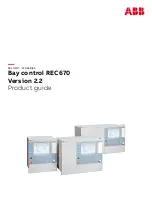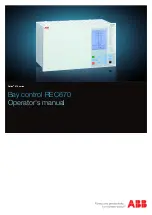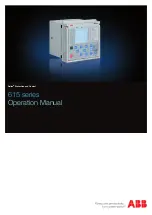
Caratteristiche generali
La valvola elettronica E2V-C è destinata all’installazione in circuiti frigoriferi come dispositivo di espansione per il fl
uido refrigerante utilizzando come segnale di regolazione il surriscaldamento calcolato tramite una sonda di pressione
ed una di temperatura poste entrambe all’uscita dell’evaporatore. Per il pilotaggio delle E2V-C è raccomandato l’uso di
strumenti CAREL.
Non utilizzare le valvole E2V al di fuori delle condizioni operative riportate di seguito.
Posizionamento
Le valvole E2V-C essendo bidirezionali possono essere installate con l’ingresso del refrigerante dalla connessione laterale (vedi Fig.
1) o dal basso.
Installare sempre un fi ltro meccanico prima dell’ingresso del refrigerante.
L’orientamento spaziale è possibile in ogni confi gurazione tranne che con lo statore rivolto verso il basso (valvola capovolta).
La posizione consigliata della valvola E2V-C è la stessa della valvola termostatica di tipo tradizionale ossia a monte dell’evaporatore
e dell’eventuale distributore. I sensori di temperatura e pressione (non forniti con le E2V-C) devono essere posizionati immediata-
mente a valle dell’evaporatore e curando in particolar modo che:
• il sensore di temperatura sia installato con pasta conduttiva e adeguatamente isolato termicamente;
• entrambi i sensori siano installati PRIMA di eventuali dispositivi che alterino la pressione (es. valvole) e/o temperatura (es.
scambiatori).
Installazione e manipolazione
Le valvole E2V-C sono a saldare.
Per le valvole a saldare seguire la successione indicata in figura procedendo in questo modo:
1. se lo statore è già assemblato, rimuoverlo svitando il dado di fissaggio e sfilandolo;
2.
avvolgere uno straccio bagnato sulla valvola e procedere alla saldatura senza surriscaldarla orientando la fiamma verso
l’estremità dei raccordi (per una brasatura saldatura senza alterare la tenuta della zona di saldatura utilizzare lega con
temperatura di fusione inferiore a 650 °C o con tenore d’argento superiore al 25%);
3. a valvola fredda reinserire lo statore sulla cartuccia spingendolo fi no a fondo corsa, avvitando il dado nero portandolo
in completa battuta fi no a deformare la corona circolare in gomma dello statore (coppia di serraggio 0,3 Nm);
4. collegare il connettore già cablato al motore passo passo nel relativo alloggiamento e serrare la vite con una coppia di
0,5 Nm seguendo le indicazioni in Fig. 3. Collegare a questo punto l’estremità quadripolare del cavo nei relativi morset-
ti del Driver CAREL EVD*** o relativo controllo omologato CAREL ed impostare i parametri secondo il set riportato nella
tabella sottostante.
Model
Step min
Step max
step close
Step/s speed mA pk
mA hold
% duty
CAREL
50
480
500
50
450
100
30
I controllori CAREL per valvola elettronica prevedono l’incremento del duty cycle dal 30% al 100% in fase di chiusura allo scopo
di diminuire i tempi d’arresto; per accelerare ulteriormente questa fase è possibile pilotare la valvola ad una frequenza massima
di 150 passi/sec.
Per ulteriori informazioni dei parametri da impostare nel driver, fare riferimento al manuale del controllo.
ATTENZIONE: le valvole CAREL vengono fornite in posizione di completa apertura. Nel caso in cui la valvola venga azionata
prima della saldatura in circuito, è necessario riportarla in condizione di completa apertura per evitare che le temperature
elevate danneggino i componenti interni.
Non esercitare torsioni o deformazioni sulla valvola o sui tubi di collegamento.
Non colpire la valvola con martelli o altri oggetti.
Non utilizzare pinze o altri strumenti che potrebbero deformare la struttura esterna o danneggiare gli organi interni.
Non orientare mai la fi amma verso la valvola.
Non avvicinare la valvola a magneti, calamite o campi magnetici.
Non procedere all’istallazione o all’uso in caso di:
•
deformazione o danneggiamento della struttura esterna;
•
forte impatto dovuto per esempio a caduta;
•
danneggiamento della parte elettrica (statore, portacontatti, connettore,...).
CAREL non garantisce il funzionamento della valvola in caso di deformazione della struttura esterna o danneggiamento delle
parti elettriche.
ATTENZIONE: la presenza di particelle dovute a sporcizia potrebbe causare malfunzionamenti della valvola.
Connessioni elettriche
Collegare un cavo quadripolare al connettore a cablare IP65 (E2VCON****) secondo lo schema sotto riportato: il connettore è di
tipo standard DIN 43650. Eventualmente collegare direttamente un connettore costampato IP67 (E2VCAB0***) la cui mappatura è
1 Verde, 2 Giallo, 3 Marrone, 4 Bianco.
Per le fasi motore si consigliano conduttori
AWG18-22
mentre il cavo quadripolare deve avere in diametro esterno
da 4 a 6 mm
per consentire un’adeguata presa della guarnizione esterna. Successivamente collegare le quattro fasi motore al vostro dispositivo
driver in modo che la fase n°1 della E2V-C corrisponda al morsetto n°1 del driver e così via.
Attenzione: la fase n°4 è indicata sullo statore valvola con il simbolo di terra.
È disponibile un connettore costampato schermato opzionale (E2VCABS***) per applicazioni con particolari disturbi elettroma-
gnetici, in riferimento alla normativa vigente 89/336/CEE e successive modifi che.
Specifiche operative CAREL E
2
V
Compatibilità
R22, R134a, R404A, R407C,R410A, R744, R507A, R417A
Massima Pressione di Lavoro (MOP)
fino a 140 bar (2030 psi)
Massimo DP di Lavoro (MOPD)
120 bar (1740 psi)
P.E.D.
Gr. 2, art. 3, par. 3
Temperatura refrigerante
-40T65 °C (-40T149 °F)
Temperatura ambiente
-30T50 °C (-22T122 °F)
Contattare CAREL per condizioni operative diverse o refrigeranti alternativi.
Statore CAREL E
2
V
Statore bipolare in bassa tensione (2 fasi - 24 espansioni polari)
Corrente di fase
450 mA
Frequenza di pilotaggio
50 Hz (fino a 150 Hz nel caso di chiusura d’emergenza)
Resistenza di fase (25 °C)
36 Ohm ± 10%
Indice di protezione
IP65 con E2VCON****, IP67 con E2VCAB***
Angolo di passo
15 °
Avanzamento lineare/passo
0,03 mm (0,0012 inch)
Connessioni
4 fili (AWG 18/22)
Passi di chiusura completa
500
Passi di regolazione
480
E
2
V -
Valvola di espansione elettronica / Electronic expansion valve / Soupape à détente électrique / Elektronisches Expansionsventil /
电子膨胀阀
+05C000342 - rel.2.0 - 27.09.2011
Fig.1
安装位置示意图
/ Positioning
NT
C
冷凝器
蒸发器
过热度检测
电子膨胀阀
General characteristics
The E2V-C electronic valve is designed to be installed in refrigerant circuits. The E2V-C uses the superheat as the
control signal which is calculated by a pressure and temperature probe located at the evaporator outlet.
Only Carel controllers or controllers offi cially accredited by CAREL are recommended to be used with the E2V-C valve.
Do not use the E2V outside the normal operating conditions, shown below.
Positioning
The double-acting E2V-C valve can be installed with the refrigerant inlet connected to the side or from the bottom (see the Fig. 1).
Always install a mechanical filter before the refrigerant inlet.
The valve can be oriented in any direction, with the exception of the stator pointed downwards, (valve upside down)
The recommended position for the E2V-C valve is the same as for a traditional thermostatic valve, that is, upstream of the
evaporator and any distributor.
The temperature and pressure sensors (not supplied with the E2V-C) must be positioned downstream of the evaporator,
making sure that:
•
the temperature sensor is installed with conductive paste and is adequately thermally insulated;
•
both sensors are installed BEFORE any devices that may vary the pressure (e.g. valves) and /or temperature (e.g. exchanger).
Installation and handling
The E2V-C valves have welded connections.
For the valves with welded connections, follow the steps shown in the fi gure, proceeding as follows:
1. if the stator is already assembled, remove it by unscrewing the fastening nut and sliding it out;
2.
wrap a wet rag around on the valve and perform the welding without overheating the valve, aiming the flame at
the ends of the fittings (for better braze welding without affecting the seal where welding, use alloys with a fusion
temperature less than 650 °C or with a silver content above 25%);
3. when the valve has cooled down replace the stator on the cartridge, pushing it fully in and then completely tighte-
ning the black nut until deforming the rubber ring on the stator (tightening torque 0.3 Nm);
4. connect the pre-wired connector to the socket on the stepper motor and tighten the screw tightening torque 0,5 Nm
following the instructions in Fig. 3. Connect the four-pin end of the cable to the corresponding terminals on the CAREL
EVD*** driver or approved CAREL controller and set the parameters as shown in the table below.
Model
Min step
Max step
Close step Speed step/s mA pk
mA hold
% duty
CAREL
50
480
500
50
450
100
30
Carel controllers for electronic valves increase the duty cycle from 30% to 100% when closing to reduce stopping time;
to further speed up this phase, the valve can be controlled at a maximum frequency of 150 steps/sec.
For further information on the parameters to be set for the driver, see the controller manual.
IMPORTANT:
CAREL valves are supplied in the fully open position. If the valve is activated before being welded to the circuit, it
must be returned to the fully open position to prevent high temperatures from damaging the internal components.
Do not twist or strain the valve or the connection pipes.
Do not strike the valve with hammers or other objects.
Do not use pliers or other tools that may deform the external structure or damage the internal parts.
Never point the flame at the valve.
Never bring the valve near magnets or magnetic fields.
Do not install or use the valve in the event of:
•
deformation or damage to the external structure;
•
heavy impact, for example due to dropping;
•
damage to the electrical parts (stator, contact carrier, connector,...).
CAREL does not guarantee the operation of the valve in the event of deformation of the external structure or dama-
ge to the electrical parts.
IMPORTANT: the presence of dirt particles may cause valve malfunctions.
Electrical connections
Connect a four-wire cable to the E2V-C IP65 cable connector (E2VCON****), according to the diagram shown below: the
connector used complies with the DIN 43650 standard.
Alternatively, use an IP67 co-moulded connector (E2VCAB0***), with the following pin confi guration: 1 Green, 2 Yellow, 3
Brown, 4 White.
The outside diameter of the four-wire cable must be between
4 and 6 mm
to ensure the grip of the external gasket.
Then connect the four phases of the motor to the driver, so that phase 1 of the E2V valve corresponds to terminal 1 on
the driver, and so on.
Warning: phase no. 4 is indicated on the valve stator by the ground symbol.
An optional shielded co-moulded connector is available (E2VCABS***) for applications with considerable electromagnetic
disturbance, in reference to the European directive in force 89/336/EEC and subsequent amendments.
Operating specifications CAREL E
2
V
Compatibility
R22, R134a, R404A, R407C,R410A, R744, R507A, R417A
Maximum Operating Pressure (MOP)
up to 140 bars (2030 psi)
Maximum Operating DP (MOPD)
120 bars (1740 psi)
P.E.D.
Gr. 2, art. 3, par. 3
Refrigerant temperature
-40T65°C (-40T149°F)
Room temperature
-30T50°C (-22T122°F)
Contact CAREL for other normal operating conditions or alternative refrigerants.
CAREL stator E
2
V
Two pole low voltage stator (2 phases - 24 polar shoes)
Phase current
450 mA
Drive frequency
50 Hz (up to 150 Hz for emergency closing)
Phase resistance (25°C / 77°F)
36 Ohm ± 10%
Index of protection
IP65 with E2VCON****, IP67 with E2VCAB***
Step angle
15 °
Linear advance/step
0.03 mm (0.0012 inches)
Connections
4 wires (AWG 18/22)
Complete closing steps
500
Control steps
480
如需更多的信息,安装本产品前请参考
“EEV
系统操作手册
”
(
代码
+030220811
)。此文档可从
CAREL
网站
www.carelcom
的
“documentation”
(
“
文档
”
)下载区获取。
For more information, read the “EEV systems operating manual (code
+030220811) before installing this product. The manual is available in the
“documentation” download area at www.carel.com.
1
3
2
T. Max
650°C
Fig. 2
焊接和操作
/ Welding and handling




















